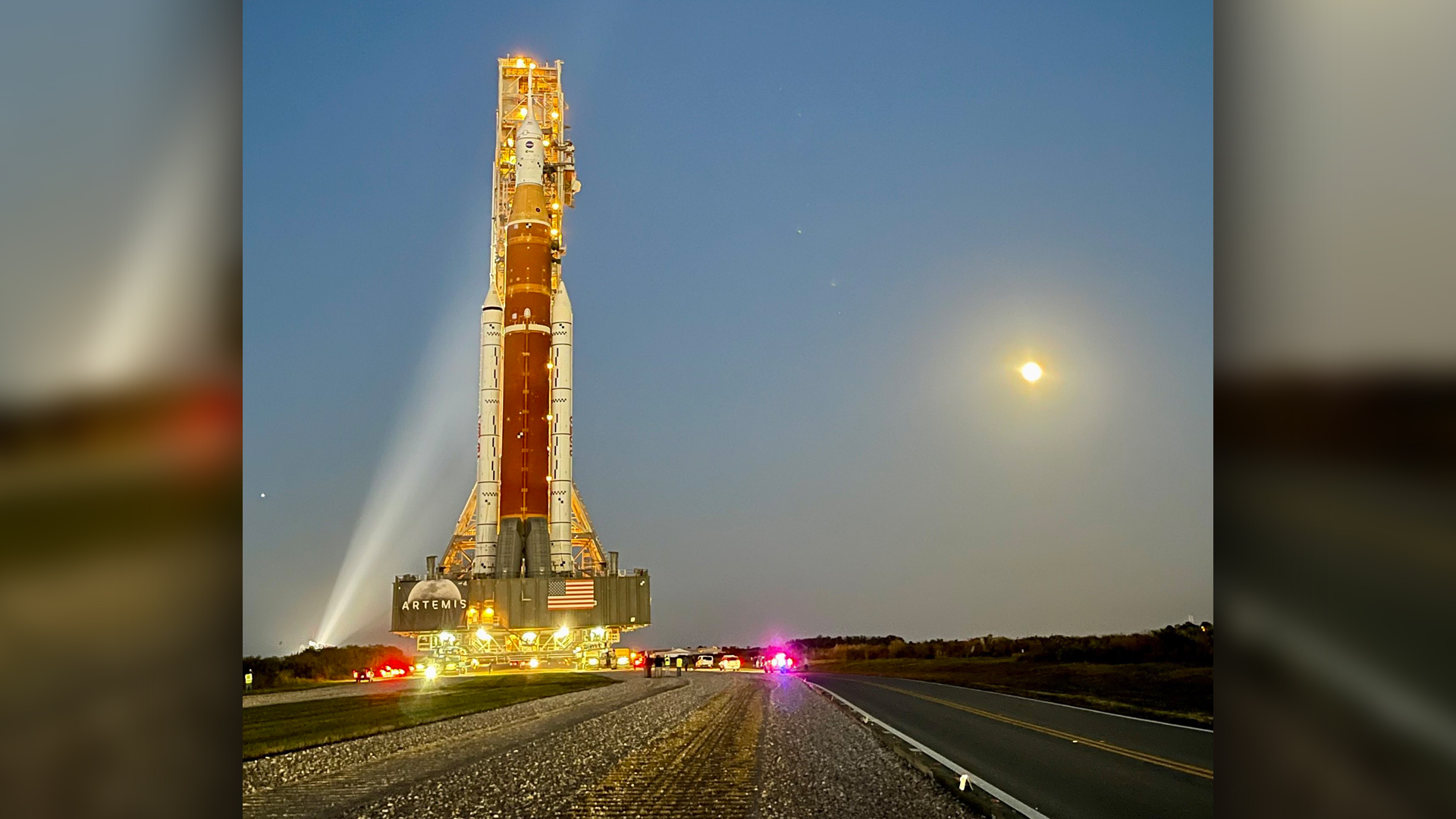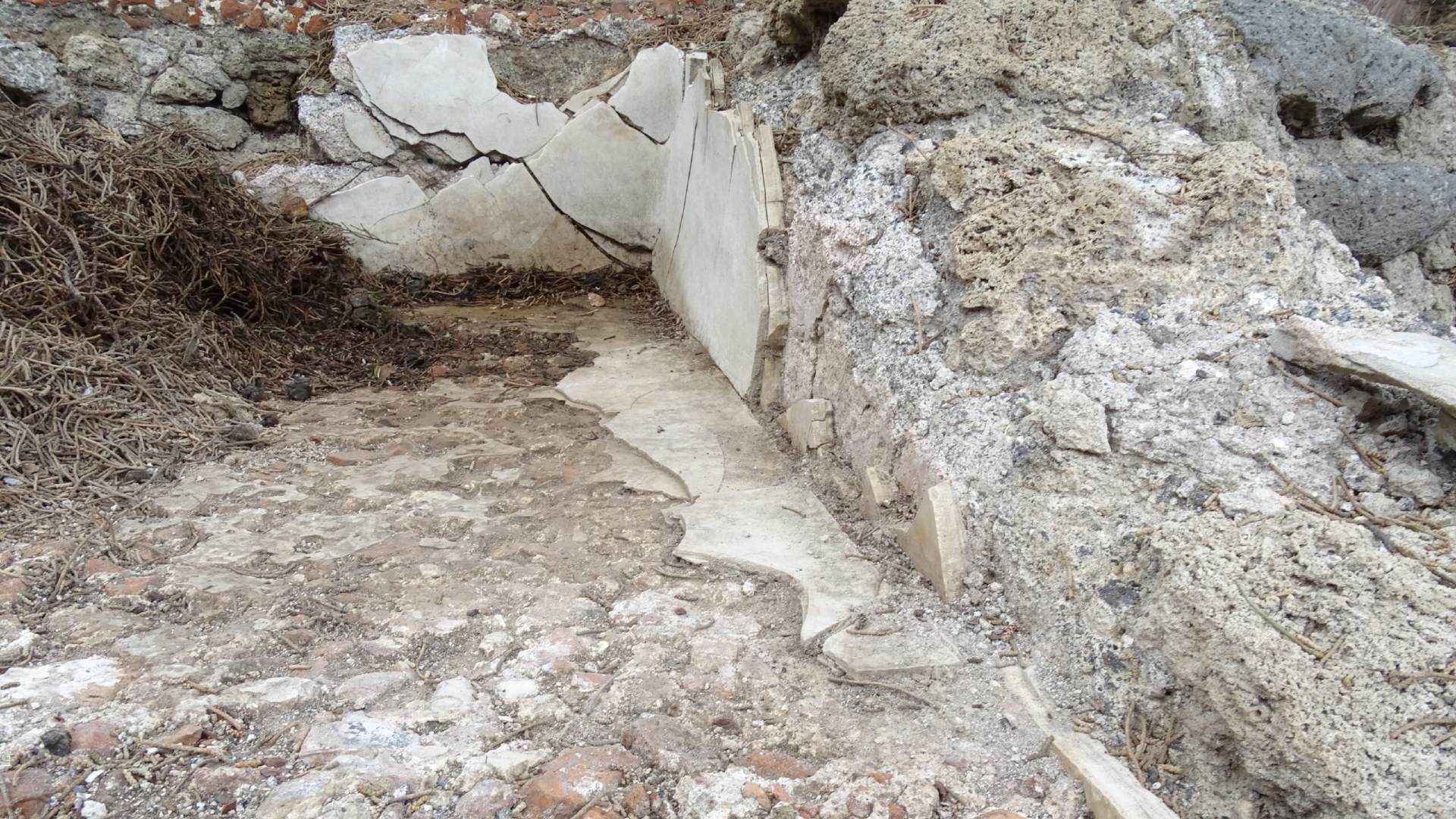Launch of NASA's 'mega moon rocket' delayed by more than a month
The Artemis 1 rocket will be rolled back for repairs.

The launch of NASA's Artemis "mega moon rocket" has been pushed out more than a month, likely to mid-October, after Saturday's (Sept. 3) second launch attempt was canceled because of an engine leak.
The gigantic Artemis 1 rocket — made up of the Orion capsule perched atop the 30-story Space Launch System (SLS) — will be rolled back to the vehicle assembly building, and the next launch window won't open until at least early October, NASA announced.
A crowd of roughly 400,000 people turned up to see the uncrewed Artemis 1 rocket launch from Kennedy Space Center in Florida Saturday. But as the sun rose over Launch Pad 39B — where the rocket was being loaded with its supercooled liquid hydrogen fuel — an alarm sounded, alerting engineers to a gap in the seal of one of the rocket's engines through which the fuel was leaking. Engineers tried and failed to plug the leak three times, NASA said, but they soon realized that no quick fix was at hand.
Related: Lightning strikes Artemis I mission's 'Mega Moon rocket' launch pad during tests
After the launch was called off, NASA Administrator Bill Nelson said the rocket's next launch window will open in early October, but because other missions will be prioritized over Artemis 1, the third launch attempt likely will fall in the middle of the month.
The rocket has been preparing to embark on the first of two test journeys that will pave the way for a crewed moon landing as early as 2025, marking humanity's first trip back to the moon since 1972 and signaling NASA's intent to establish a long-term presence there.
"We go when it's ready," Nelson said. "We don't go until then, and especially now on a test flight, because we're going to stress this and test it, and test that heat shield, and make sure it's right before we put four humans up on the top of it."
Get the world’s most fascinating discoveries delivered straight to your inbox.
Both Artemis 1 launch attempts have been scrubbed by technical issues. The first attempt was canceled because engineers were unable to cool one of the rocket's four core-stage RS-25 engines to a safe temperature in time for liftoff. NASA declared that it had fixed the problem, which the agency said was caused by a faulty sensor that incorrectly reported the temperature inside the engine as being much higher, and much further from flight-ready, than it actually was. The cause of the second attempt's cancellation, a hydrogen fuel leak from one of the rocket's core-stage engines, was far more serious, requiring a rollback to fix.
The Artemis 1 mission, which will send the Orion capsule as far as 40,000 miles beyond the moon and back, is part of NASA's larger Artemis program. Artemis 1 will be followed by the Artemis 2 and Artemis 3 missions in 2024 and 2025/2026, respectively. Artemis 2 will make the same journey as Artemis 1, but with a four-person human crew, and Artemis 3 will send the first woman and the first person of color to land on the moon, on the lunar south pole. The delay to the first launch will not affect the rest of the program's schedule, Nelson said.
The technical difficulties for NASA's moon rocket began months before the scheduled launch. During the wet dress rehearsal in April, a faulty helium valve and a liquid-hydrogen leak prevented the rocket from being prepared to the point of ignition, Live Science previously reported. This led NASA, wary of additional delays, to roll out the rocket without a full prelaunch test of the rocket's assembled engines. But the delays have come nonetheless.
The setback will increase the scrutiny on NASA for the Artemis program's ballooning price tag. Since it began in 2017, Artemis has already cost more than $40 billion to develop and is projected to total $93 billion by the end of 2025, according to the Office of NASA Inspector General Paul Martin, the space agency's internal auditor.
"Given our estimate of a $4.1 billion per-launch cost of the SLS/Orion system for at least the first four Artemis missions, NASA must accelerate its efforts to identify ways to make its Artemis-related programs more affordable," Martin said in March 1 testimony before the House Subcommittee on Space and Aeronautics. "Otherwise, relying on such an expensive single-use, heavy-lift rocket system will, in our judgment, inhibit, if not derail, NASA's ability to sustain its long-term human exploration goals of the moon and Mars."
The manager of the Artemis mission, Mike Sarafin, told reporters that NASA engineers were taking extreme care of the rocket's launch because of its crucial role in future space operations.
"This is an incredibly hard business," Sarafin said. "This is an initial test flight of this vehicle. As was said, we're going to fly when we're ready. And as part of this initial test flight, we're learning the vehicle. We're learning how to operate the vehicle."
NASA has said the Artemis program is worth the high cost because it will spur technological innovation and be a crucial next step in humanity's exploration of the cosmos.
"This time we're going not just to touch down [on the moon] and leave after a few hours or a few days — we're going back to learn, to live, to work, to explore, to determine is there water; therefore on the [moon's] south pole that would mean we have rocket fuel, we have a gas station up there," Nelson told BBC Radio 4. "This time we're going to learn how to live in that hostile environment for long periods of time, all with the purpose that we're going to Mars.”
Assuming NASA irons out the technical kinks, new headaches for the space agency could emerge in the form of weather problems in the Atlantic basin. After a two-month hiatus, this year's Atlantic hurricane season has kicked into gear with two new named storms — Danielle and Earl. If more come, the weather will add a fresh dimension of unpredictability to October's flight.
Originally published on Live Science.

Ben Turner is a U.K. based writer and editor at Live Science. He covers physics and astronomy, tech and climate change. He graduated from University College London with a degree in particle physics before training as a journalist. When he's not writing, Ben enjoys reading literature, playing the guitar and embarrassing himself with chess.
 Live Science Plus
Live Science Plus





